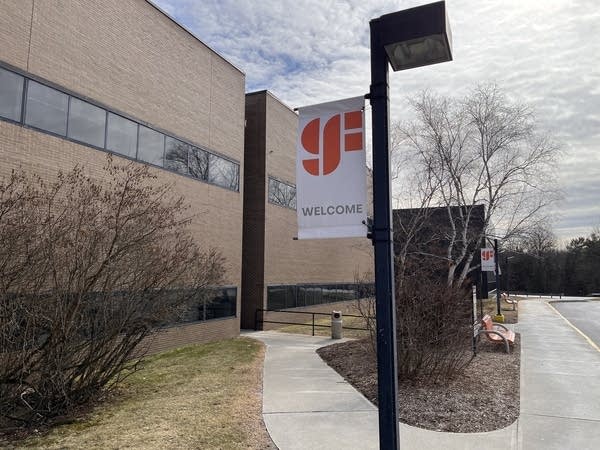With CHIPS Act money, the Biden administration bets an old plant can make new chips

President Joe Biden’s administration has finally started announcing grants to semiconductor companies, more than a year and a half after Congress voted to invest billions in the domestic chip-manufacturing industry.
Last week, we learned that $8.5 billion is earmarked for Intel to build or expand factories in four states, and the Taiwanese semiconductor giant TSMC is likely to get $5 billion for two facilities now under construction in Arizona.
But much smaller grants are going out too, including a $125 million award for a 67-year-old chip factory near Burlington, Vermont, part of a larger award for the company GlobalFoundries. Though the plant is far from its heyday, the Biden administration is betting it can be rebuilt to make a new kind of chip to power smartphones and electric cars.
The heyday of that Vermont plant is on display in Earl Mungeon’s basement in Westford, Vermont. Beneath wood-paneled walls and a “Is It Wine O’clock Yet?” sign, he laid out memorabilia across his pool table — flyers, meeting handouts, newspaper clips and more from his 39 years as an engineer and labor organizer at a semiconductor plant in Essex Junction.

“Newspaper clips on, you know, IBM when they were expanding their workforce, actually by 500 people in Essex,” he said, holding a piece of newsprint. “And of course, this was in 1999.”
IBM opened the plant in the mid-1950s. For decades, it’s been the small state’s largest private-sector employer. In the late 1990s, it peaked at about 8,500 workers.
“It was like its own little city,” Mungeon recalled, “because there were so many employees, and, you know, there’s so many different personalities.”
But that feeling didn’t last. In the early 2000s, Mungeon said IBM began to cut back its investments in the facility.
“Our quality kind of suffered a little bit, and we had some slowdowns,” he said.
It also began to change its pension program and health insurance benefits, Mungeon said, which spurred him to help lead an ultimately unsuccessful effort to unionize the plant’s workers. Meanwhile, IBM began to lay people off as it moved away from manufacturing and toward tech services.
By the time IBM paid GlobalFoundries to take the Essex Junction plant off its hands in 2015, its peak workforce had been more than cut in half. Now, it’s down to about 1,800 employees.
“It doesn’t employ as many people as it did in the ‘90s, but it’s employed generations of Vermonters,” said Christine Dunbar, who was one of those Essex employees for over 25 years.
Though its workforce has shrunk and it doesn’t make the most cutting-edge chips, the Essex plant has run continuously for decades.
“Time and time again, that team there at IBM and now GlobalFoundries has transformed themselves and the products and has given that factory new life,” Dunbar said.

If the plant clears a final hurdle — a due diligence check — and the $125 million federal grant comes through, they’re poised to do it again. This time, by making chips with a material called gallium nitride.
Most chips are made on silicon. But Willy Shih, a professor of management practice at Harvard Business School, said gallium nitride is gaining popularity because it can handle more power.
“The electrons actually move faster in a gallium nitride semiconductor device than they do in silicon,” Shih said.
That makes it an ideal material for charging things, according to Christine Dunbar. She’s now a senior vice president at the British semiconductor firm IQE, which makes gallium nitride components. During an interview, she held a smartphone charger that uses the material.
“It’s cool to the touch, it charges very fast and it’s using a lot less energy,” she said.
All of those attributes make gallium nitride chips a good fit for electric vehicles too. They can also amplify the high frequencies in smartphones used to access cell data.
Right now, these specialty chips need to be a certain size, a size many newer plants no longer make. Lucky for the Vermont plant, its older manufacturing lines still do. And because semiconductor plants are really expensive to build from scratch, Shih at Harvard said older facilities like this one have value.
“You already have clean room processes, you already have materials handling processes and you have some of that general semiconductor expertise,” he said.
A previous $30 million federal grant helped GlobalFoundries carry out a successful pilot making gallium nitride chips, said Scott Johnson, the plant’s senior director of technology development. But to make the chips at scale, he said, the place needs better tools and other upgrades.
“To stay competitive, you’ve got to continuously improve your plant, and this one needs some tender loving care,” Johnson said.
It’ll get it, assuming the planned federal funds come through. Owner GlobalFoundries will invest in the facility as well, although a spokesperson would not say exactly how much.
The company also won’t say exactly how many more people it will hire, beyond the expected 400 construction jobs. So while the plant may have a more certain future, that citylike workforce of the late ‘90s is not likely coming back.










